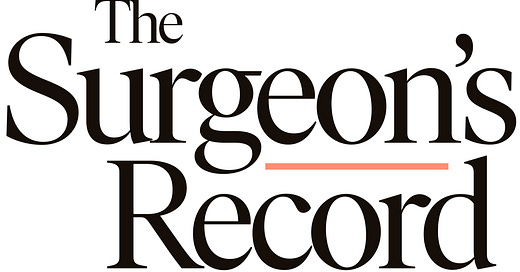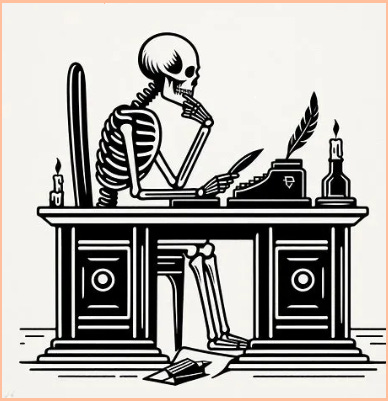Like other service industries that require 24/7/365 availability, the holidays take on a slightly different meaning for health care workers. What is a time of rest, relaxation, and reflection for most can be a time of stress for medical professionals. No one likes to work on a holiday, but somebody has to do it. Illness doesn’t go on holiday.
Being a doctor is a humbling job — the highest of the highs is offset by the lowest of the lows. Medical training is a roller coaster of triumphant successes and bitter failures. Resilience grows from hard lessons and trying moments — even over the holidays. One of the darkest periods in my medical career came during my ICU rotation as an intern. Thanksgiving 2002 taught me resilience in the form of a misplaced central line.
BOSTON — Thanksgiving 2002. I’m five months into my general surgery internship and three weeks into the most dreaded part of the year, back-to-back months in the ICU. As a budding orthopedic surgeon, critical care was not a skill I anticipated needing in the future. But ICU rotations are a rite of passage all interns must face, no matter their specialty. Some thrive, most just try to survive.
My first month in the ICU was spent in the smaller of the two hospitals on our campus. Patients here were recovering from major elective or semi-elective surgeries — carotid endarterectomies, cancer resections, and invasive abdominal procedures. Many had experienced complications: life-threatening infections, multisystem organ failure, and massive blood clots. Medically and surgically complex, they were among the sickest patients in the hospital.
That Thanksgiving, I drew the short straw — I would be on call for the holiday. It had already been a rough month. There were three of us interns, and none of us were thriving. The ICU nurses — cream of the nursing crop — didn’t like us. As a group, we were falling short of our attending’s expectations. Exhausted from taking call every third night, we were battling to keep our collective heads above water. Morale was low, and my counterparts were looking forward to some restful time off. As the on-call intern, I’d find no respite this Thanksgiving.
Though I’ve taken many such calls since, Thanksgiving 2002 was my first experience working a holiday. The hospital can be an odd place during these times. The usual bustle is replaced by an eerie quiet and subdued atmosphere. With the operating room closed, I wasn’t expecting any new admissions. Our census was low, and the patients were mostly stable. I was a little less on edge and, for once, had time to fully catch up on my punch list of intern duties. Around noon, a call came in from one of the nurses. Our sickest and most complex patient, an abdominal surgery patient who’s on a ventilator, needs a new central line.
A central line is a special type of intravenous (IV) catheter that’s more robust and can be used to deliver multiple medications at once. Inserting a central line is more involved than placing a regular IV, and doing so efficiently requires experience and skill. During the procedure, a large needle is inserted under the collarbone, a guidewire is threaded through the needle, and a catheter is advanced over the guidewire into the subclavian vein. If placed too deep, the catheter can tickle the heart and lead to arrhythmias. During needle insertion, there’s a small risk of puncturing the lung. (Today, some central lines are placed using ultrasound guidance. Back then, we relied on anatomical landmarks.)
Hospital policy dictated that interns be supervised by senior residents when placing central lines. That Thanksgiving, the resident covering the ICU was the surgical fellow, the most senior of all trainees. No intern relishes calling their senior resident into the hospital on a holiday. Calling the fellow for something as trivial (for him) as placing a central line was an especially unenviable task.
An hour later, I watched from the bedside as the fellow quickly and efficiently placed the central line and left. On a holiday, there’s little time for teaching or patience for a slow intern. My job was to confirm proper line placement and ensure no lung puncture or other complication had occurred. I ordered the portable chest X-ray and waited for the images to appear in the PACS system.
As is typical for an intubated ICU patient, the x-ray was a difficult-to-interpret jumble of wires, tubes, and lines. I scanned the image to identify the central line near the clavicle, then carefully traced its path. From the middle of the chest, the catheter gently curved down the subclavian vein toward the heart. The line looked good — not too shallow, not too deep. I called the nurse and placed the order. The line was ready for use.
Later that afternoon, a call came from the radiology resident. After a brief conversation, my heart sank. The tip of the central line wasn’t in the subclavian vein and had to be replaced or repositioned. I quickly pulled up the patient’s x-ray, certain the radiologist was mistaken. My heart sank again. What I had thought was the central line was an EKG wire. Among the nest of tubes and wires, the actual central line was now clearly visible. Kinked halfway along its path, the catheter was heading up the internal jugular vein toward the brain.
I informed the nurse, but it was too late — she was already administering medication through the catheter.
“I’m documenting in the chart that you told me it was OK to use the central line,” she curtly told me.
In a month already full of them, it was another gut punch to my bruised ego and fragile confidence. Adding to the embarrassment, I called the fellow and informed him of the misplaced line — he’d have to come in and do it again.
A short time later, the fellow appeared, replaced the line, and quickly disappeared again, barely acknowledging me. This time, I learned my lesson. Once the x-ray was completed, I walked to the radiology department to review the film directly with the resident. The newly placed catheter was good to go, its tip perfectly nestled in the subclavian vein a few centimeters outside the heart. I sheepishly informed the nurse and placed a new order. For the next few hours, I carefully monitored the patient. Thankfully, he demonstrated no ill effects from the misplaced line. With the escapade over and relative calm restored, I quietly slipped away to the cafeteria.
I didn’t have much of an appetite. The central line episode added to the frustrations of an already challenging month. Sitting in the empty cafeteria, I realized this was my first Thanksgiving away from family. In this moment of quiet, the weight of the past few weeks and today’s failure built. I felt defeated and alone. I was in no mood to talk, but it was the holidays, and I was due for a call home.
Like many physicians, I’m loath to share my struggles with family. Doctors are expected to be resilient with short memories and unshakable confidence. Vulnerability is a sign of weakness. But hard as I tried to hide my flagging morale, my family knows me too well. They gently probed, offering words of encouragement to buoy my mood. I wasn’t with them physically, but they were with me in spirit.
An underappreciated but key component of physician resilience is the support of family and colleagues. This includes the freedom to speak openly about struggles and failures without fear of judgment. More than two decades later, I’m reminded of how far I’ve come — and of the people who helped me along the way. Medicine demands resilience, but it also teaches us to lean on others. This Thanksgiving, I’m thankful for the unconditional support of my parents, siblings, wife, and children. Their constant encouragement and belief in me have been critical to my success. Without it, I wouldn’t be the doctor I am today.
Finally, this Thanksgiving, let's take a moment to appreciate the health care workers sacrificing time away from loved ones around the holidays. It’s an underrecognized part of the job that deserves appreciation.
Happy Thanksgiving from Commons Clinic and “The Surgeon’s Record.”
Epilogue
I made it through my final week on the surgical ICU rotation without incident and transitioned to the trauma surgery ICU. The month was still challenging, but I approached it with a renewed sense of purpose. This time, I found a kindred spirit in Minesh, an anesthesia intern with a sense of humor and work ethic that mirrored my own. With four interns on the rotation, many call days were doubled up. Minesh and I became fast friends, finding camaraderie in shared challenges. Embracing the complexity and occasional absurdity of our situation helped us endure.
Each trauma admission reminded us of life’s fragility, and we fought to do our best for each patient. One night, I pronounced an elderly patient with a do-not-resuscitate order — the first and only time I’ve had to do so. Moments like these were sobering, leaving an indelible mark on us. Though the cases were difficult and undoubtedly affected us, we left the rotation more resilient — hardened, yet with a deeper appreciation of the human condition.
Having taken my holiday call on Thanksgiving, I was off for Christmas and New Year’s — a much-needed opportunity to reflect and renew.








Ben, Happy Thanksgiving to you and yours. I enjoyed the column---although it was painful to read it. Those of us in medicine each have some similar story of when we fell short and patients were put at risk. Our "less than perfect" may cause serious harm to a patient---and that is emotionally devastating. As you know, the only surgeon who has no complications is the one who does not operate.